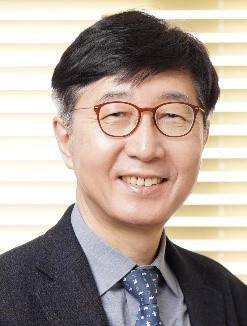Time: 15:10-16:30, Friday,May 10, 2024
Venue: E10-304, Yungu Campus
Host: Dr. Rui Wang, Assistant Professor, Westlake University
Language: English
Speaker:

Nam-Gyu Park
Distinguished Professor
Sungkyunkwan University
Biography:
Nam-Gyu Park is a Distinguished Professor at the School of Chemical Engineering and Director of the SKKU Institute of Energy Science and Technology (SIEST), Sungkyunkwan University (SKKU). He earned his B.S. degree in chemical education, followed by M.S. and Ph.D. degrees in chemistry from Seoul National University in 1988, 1992, and 1995, respectively. Prof. Park has an extensive international research background, having served as a postdoctoral researcher at ICMCB-CNRS, France, from 1996 to 1997 and at the National Renewable Energy Laboratory, USA, from 1997 to 1999. Prior to his current role, Prof. Park held key positions, including director of the solar cell research center at the Korea Institute of Science and Technology (KIST) from 2005 to 2009 and senior researcher at the Electronics and Telecommunications Research Institute (ETRI) from 2000 to 2005. He joined SKKU as a full professor in 2009. Prof. Park is recognized as a Fellow of the Korean Academy of Science and Technology (KAST) since 2017. His expertise lies in the field of photovoltaics, with a career spanning back to 1997. Notably, he made groundbreaking contributions by being the first to report a long-term stable perovskite solar cell in 2012, thereby initiating the research domain of perovskite photovoltaics. Acknowledging his significant impact in the scientific community, Prof. Park was honored as a Citation Laureate (top 0.01% scientist), a New Class of Nobel Prize-Worthy Scientist, on September 20, 2017, and consistently recognized in the highly cited researchers (HCR, top 1% scientists) list from 2017 to 2023 by Clarivate Analytics. Throughout his career, Prof. Park has received numerous awards, including the Scientist Award of the Month (2008), KIST Award of the Year (2009), Dupont Science and Technology Award (2010), SKKU Fellowship (awarded three times in 2013, 2018, and 2021), PVSEC Hamakawa Award (2015), Dukmyung KAST Engineering Award (2016), ACS-KCS Excellence Award (2018), Ho-Am Prize (Samsung, 2018), and Rank Prize (UK, 2022). Prof. Park has impressive publication records with about 400 refereed publications and more than 70 patents. His scholarly impact is underscored by an H-index of 116 according to Google Scholar (105 from Web of Science and 108 from Scopus). Beyond his research contributions, Prof. Park actively contributes to the scientific community as the Senior Editor of ACS Energy Letters and serves on the Editorial Advisory Board for Chem. Rev., ChemSusChem, and Solar RRL. His multifaceted contributions exemplify his dedication to advancing the field of energy science and technology.
Abstract:
Meeting the burgeoning electricity demands of our evolving society, especially at the terawatt scale, necessitates the simultaneous achievement of high power conversion efficiency and a low cost per watt peak in solar cell technology. Before the advent of perovskite solar cells, only a limited number of materials and technologies could meet both prerequisites. This presentation outlines the journey towards the development of practical solid-state perovskite solar cells. Commencing with a brief overview of seed technologies, the discussion progresses to the emergence of solid-state perovskite solar cells. Early attempts involved the utilization of quantum dot inorganic materials, such as nanocrystalline lead sulfide, as light harvesters. Despite their promise, these materials faced insurmountable challenges, primarily surface-defect-mediated recombination. Recognizing the limitations, methylammonium lead triiodide (MAPbI3) perovskite was suggested as an alternative to inorganic quantum dots. However, initial implementations as sensitizers in liquid-electrolyte-contained structures yielded discouraging results, with efficiencies as low as 3-4% in 2009 and the dissolution of MAPbI3. A breakthrough occurred in 2012 when a pioneering study showcased a 9.7% efficient and 500-hour-stable perovskite solar cell, leveraging MAPbI3 and a solid hole transporting material. This pivotal development rendered perovskite solar cells a viable and durable technology. Subsequent years witnessed a rapid surge in perovskite photovoltaic research, culminating in efficiencies exceeding 26%, rivaling or surpassing existing technologies. Current research endeavors are concentrated on enhancing stability and exploring tandem structures for generating electricity in both terrestrial and space applications. The perovskite solar cell stands poised as the most promising energy solution, with its potential impact on sustainable energy surpassing current expectations once stability and lead immobilization challenges are effectively addressed.
Contact:
Ms. Songmei Zhu
zhusongmei@westlake.edu.cn